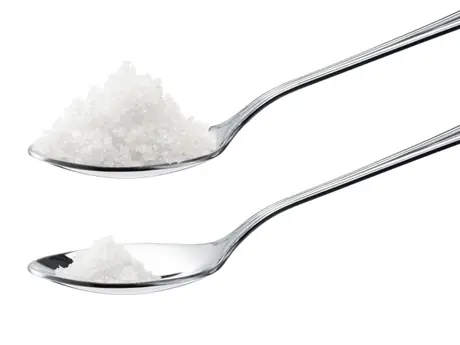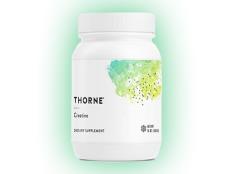
Do you know how much sodium and fat your body needs to be healthy? The American Heart Association recommends no more than 2,400 milligrams of salt a day for both athletes and less active people. However, people ages 2 years and older consume, on average, 3,436 milligrams daily—this can increase the risk for heart attack, stroke and obesity.
More: 3 Ways to Lower Your Salt Intake
The story is the same with fat: the current daily recommendation for adults and athletes is 20 to 35 percent of total calories and less than 10 percent of calories from saturated fat, yet many people easily go over that limit by noshing on processed foods and fried dinners. The dangers of too much fat are similar to those for eating too much salt, making it crucial that you cut back on both of these if you're eating more than the recommended amount.
However, it's not as hard as it may sound. Simply reducing your intake of salt to 1,200 to 1,500 milligrams and sticking to the recommended daily fat intake can help you avoid those negative health problems.
But how do you do that? When you know what food items are high in salt and fat, and how to tweak them for a healthy diet, you can keep both at a safe level. An effective trick to reduce your sodium and fat intake is to get creative in how you flavor your food during preparation, cooking and at the table.
Note: As an athlete, it's important to remember that going below 20 percent of fat from total calories is too low and won't improve performance. Also note that salt is a critical electrolyte. If you have significant sweat loss during workouts, don't cut your sodium much lower than 2,300 milligrams.
More: How to Make Your Own Healthy Condiments
Do the Math
If you consume 2,000 calories a day, 400 to 700 calories can come from fat and 200 or less of those calories can come from saturated fat. If you were to consume half of an avocado, a quarter cup of almonds, and use 1 tablespoon of olive oil then that would equate to about 20 percent of your total calories from fat for the day.
Choose almonds that are minimally salted or not at all, and season your avocado with pepper instead of salt to stay within your daily recommended levels. Note that there's no sodium in olive oil, so you're safe with a full tablespoon.
Make Changes
Use liquid vegetable oil instead of solid fats when cooking. For example, try saut?ing with olive oil instead of butter.
Make homemade salad dressing. The basic recipe is a 3 to 1 ratio of oil to vinegar. Although extra virgin olive oil is the most common oil used for marinades, try other oils like safflower, canola, soybean, walnut or avocado oil. Choose vinegar like apple cider, white wine—the most neutral-flavored vinegar—balsamic, red wine, sherry, raspberry or rice vinegar. Add your favorite fresh or dried herbs and spices like thyme, garlic, pepper, oregano, parsley or celery seed. Lastly dice fresh onion, jalapenos, or shallots to add a punch of fresh flavor.
- 1
- of
- 2
About the Author








Discuss This Article